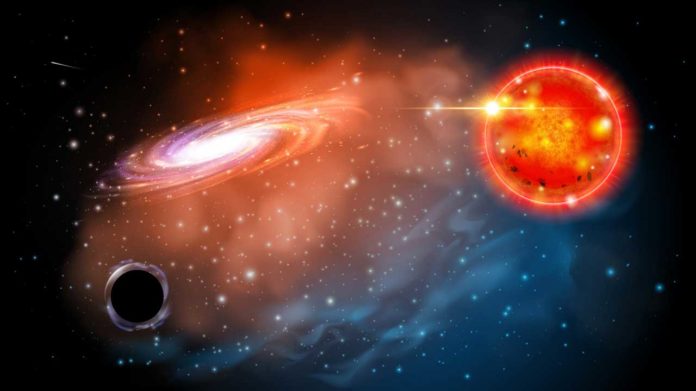Black holes are some of the strangest and most fascinating objects in outer space. Black holes are a significant piece of how astrophysicists understand the universe so significant that researchers have been attempting to build the census of all the black holes in the Milky Way galaxy.
But according to a new study by The Ohio State University suggests that their exploration might be missing a whole class of black holes that they didn’t know existed.
In addition to offering a new method for detection, scientists have suggested the possibility of existence of black holes smaller than the smallest known black holes in the universe.
Todd Thompson, a professor of astronomy at The Ohio State University and lead author of the study, said, “We’re showing this hint that there is another population out there that we have yet to really probe in the search for black holes.”
“People are trying to understand supernova explosions, how supermassive black stars explode, how the elements were formed in supermassive stars. So if we could reveal a new population of black holes, it would tell us more about which stars explode, which don’t, which form black holes, which form neutron stars. It opens up a new area of study.”
“Imagine a census of a city that only counted people 5’9” and taller – and imagine that the census takers didn’t even know that people shorter than 5’9” existed. Data from that census would be incomplete, providing an inaccurate picture of the population. That is essentially what has been happening in the search for black holes.”
Black holes are usually formed when an extremely massive star dies in a supernova. On the other hand, neutron stars are another most exotic objects in the universe.
Neutron stars are created when giant stars die in supernovas and their cores collapse, with the protons and electrons essentially melting into each other to form neutrons.
Both black holes and neutron stars could hold exciting information about the elements on Earth and about how stars live and die. But, to reveal that information, astronomers first have to detect the location of black holes. Also, they need to know what they are looking for.
Black holes are often found in binary systems, where two stars orbit each other like the twin suns we see on Tatooine in the “Star Wars” films.
If one star dies, the other still orbit the space where it existed, even if that space is now filled by a black hole or neutron star.
Until this study, astronomers found black holes that clocked in between five and 15 times the mass of our sun, while neutron stars are only about two times the mass of the sun– if they were above 2.5 times the sun’s mass, they would collapse to a black hole.
But in 2017, LIGO – the Laser Interferometer Gravitational-Wave Observatory survey changed everything. The survey detected two black holes merging in a galaxy about 1.8 million light-years away. The two supermassive black holes were 31 times the mass of the sun and 25 times its mass, respectively.
Till then, scientists used to believe that black holes come in a variety of sizes. However, LIGO’s discovery proved that black holes could be larger. But there remained a window of size between the biggest neutron stars and the smallest black holes.
Thus, Thompson decided to see if he could solve that mystery.
He, along with other scientists, turned to Apache Point Observatory Galactic Evolution Experiment (APOGEE) data, which has observed light from 100,000 stars in the Milky Way.
They observed if shifts in the wavelengths of the star recommended a fellow companion that was generally undetectable. On the off chance that they indicated a change in wavelength, going from blue to red, it may propose that the companion had transformed into a black hole.
By combining data, Thompson started looking for stars that showed that change, indicating that they might be orbiting a black hole. What’s more, While narrowing down the list of stars to the most likely candidates, Thompson and his colleagues found a giant red star orbiting something smaller than the smallest known black hole but larger than any known neutron star.
Further exploration suggested that they have discovered a low-mass black hole, likely about 3.3 times the mass of the sun.
Thompson said, “What we’ve done here is come up with a new way to search for black holes, but we’ve also potentially identified one of the first of a new class of low-mass black holes that astronomers hadn’t previously known about.”
“The masses of things tell us about their formation and evolution, and they tell us about their nature.”
Other co-authors of this study include Christopher Kochanek, Kris Stanek, and Jennifer Johnson, who are professors of astronomy; Jamie Tayar and Tom Holoien, former Ohio State graduate students; and Katie Auchettl, a former Ohio State Center for Cosmology and Astro-Particle Physics (CCAPP) Postdoctoral Fellow. The work was funded by the Research Corporation, the Simons Foundation Fellowship, and an IBM Einstein Fellowship from the Institute for Advanced Study at Princeton.
